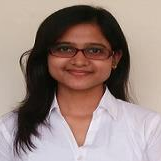International Journal of Engineering and Manufacturing (IJEM)
IJEM Vol. 8, No. 1, 8 Jan. 2018
Cover page and Table of Contents: PDF (size: 566KB)
Deep Neural Network for Human Face Recognition
Full Text (PDF, 566KB), PP.63-71
Views: 0 Downloads: 0
Author(s)
Index Terms
Face recognition, haar cascade, deep neural networks, convolutional neural networks, softmax
Abstract
Face recognition (FR), the process of identifying people through facial images, has numerous practical applications in the area of biometrics, information security, access control, law enforcement, smart cards and surveillance system. Convolutional Neural Networks (CovNets), a type of deep networks has been proved to be successful for FR. For real-time systems, some preprocessing steps like sampling needs to be done before using to CovNets. But then also complete images (all the pixel values) are passed as input to CovNets and all the steps (feature selection, feature extraction, training) are performed by the network. This is the reason that implementing CovNets are sometimes complex and time consuming. CovNets are at the nascent stage and the accuracies obtained are very high, so they have a long way to go. The paper proposes a new way of using a deep neural network (another type of deep network) for face recognition. In this approach, instead of providing raw pixel values as input, only the extracted facial features are provided. This lowers the complexity of while providing the accuracy of 97.05% on Yale faces dataset.
Cite This Paper
Priya Gupta, Nidhi Saxena, Meetika Sharma, Jagriti Tripathi,"Deep Neural Network for Human Face Recognition", International Journal of Engineering and Manufacturing(IJEM), Vol.8, No.1, pp.63-71, 2018. DOI: 10.5815/ijem.2018.01.06
Reference
[1] Sun, Yi, Xiaogang Wang, and Xiaoou Tang. "Hybrid Deep Learning for Face Verification." IEEE Transactions on Pattern Analysis and Machine Intelligence 38.10 (2016): 1997-2009.
[2] Hu, Guosheng, et al. "When face recognition meets with deep learning: an evaluation of convolutional neural networks for face recognition." Proceedings of the IEEE International Conference on Computer Vision Workshops. 2015.
[3] Goodfellow, Ian, Yoshua Bengio, and Aaron Courville. Deep learning. MIT Press, 2016.
[4] Zhang, Tong, et al. "A deep neural network driven feature learning method for multi-view facial expression recognition." IEEE Trans. Multimed 99 (2016): 1.
[5] Lawrence, Steve, et al. "Face recognition: A convolutional neural-network approach." IEEE transactions on neural networks 8.1 (1997): 98-113.
[6] Srivastava, Nitish, et al. "Dropout: a simple way to prevent neural networks from overfitting." Journal of Machine Learning Research 15.1 (2014): 1929-1958.
[7] Kanade, Takeo. "Picture processing system by computer complex and recognition of human faces" Doctoral dissertation, Kyoto University 3952 (1973): 83-97.
[8] Brunelli, Roberto, and Tomaso Poggio. "Face recognition: Features versus templates." IEEE transactions on pattern analysis and machine intelligence 15.10 (1993): 1042-1052.
[9] Cox, Ingemar J., Joumana Ghosn, and Peter N. Yianilos. "Feature-based face recognition using mixture-distance." Computer Vision and Pattern Recognition, 1996. Proceedings CVPR'96, 1996 IEEE Computer Society Conference on. IEEE, 1996.
[10] Ahonen, Timo, et al. "Recognition of blurred faces using local phase quantization." Pattern Recognition, 2008. ICPR 2008. 19th International Conference on. IEEE, 2008.
[11] Kohonen, Teuvo, and Self-Organizing Maps. "vol. 30." Berlin, Heidelberg, New York: Springer 1997 (1995): 2001.
[12] Wiskott, Laurenz, et al. "Face recognition and gender determination." (1995): 92-97.
[13] Maas, Andrew L., Awni Y. Hannun, and Andrew Y. Ng. "Rectifier nonlinearities improve neural network acoustic models." Proc. ICML. Vol. 30. No. 1. 2013.
[14] Chan, Chi Ho, et al. "Multiscale local phase quantization for robust component-based face recognition using kernel fusion of multiple descriptors." IEEE Transactions on Pattern Analysis and Machine Intelligence 35.5 (2013): 1164-1177.
[15] S. Moore and R. Bowden, Local binary patterns for multi-view facial expression recognition. Computer Vision and Image Understanding, 2011, pp. 541-558.
[16] Ahonen, Timo, Abdenour Hadid, and Matti Pietik?inen. "Face recognition with local binary patterns." Computer vision-eccv 2004 (2004): 469-481.
[17] M. Dahmane and J. Meunier, Emotion recognition using dynamic gridbased HoG features. Proc. IEEE International Conference on Automatic Face and Gesture Recognition and Workshops, 2011, pp. 884-888.
[18] Turk, Matthew, and Alex Pentland. "Eigenfaces for recognition." Journal of cognitive neuroscience 3.1 (1991): 71-86.
[19] P. Ekman, W. V. Friesen, and J. C. Hager, Facial Action Coding System: The Manual on CD ROM. Research Nexus Division of Network Information Research Corporation, 2002.
[20] D. G. Lowe, “Distinctive Image Features from Scale-Invariant Keypoints,” International Journal of Computer Vision, vol. 60, no. 2, pp. 91–110, Nov. 2004.
[21] D. G. Lowe, “Object Recognition from local scale-invariant keypoints,” In proc. of International Conference on Computer Vision, pp. 1150-1157, 1999.



